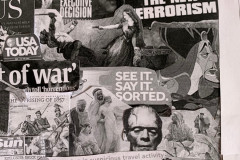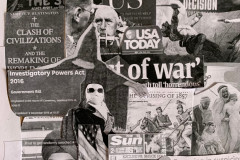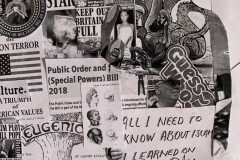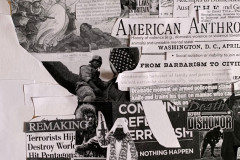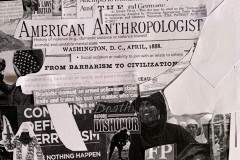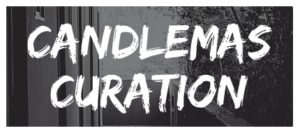Katie Birrell
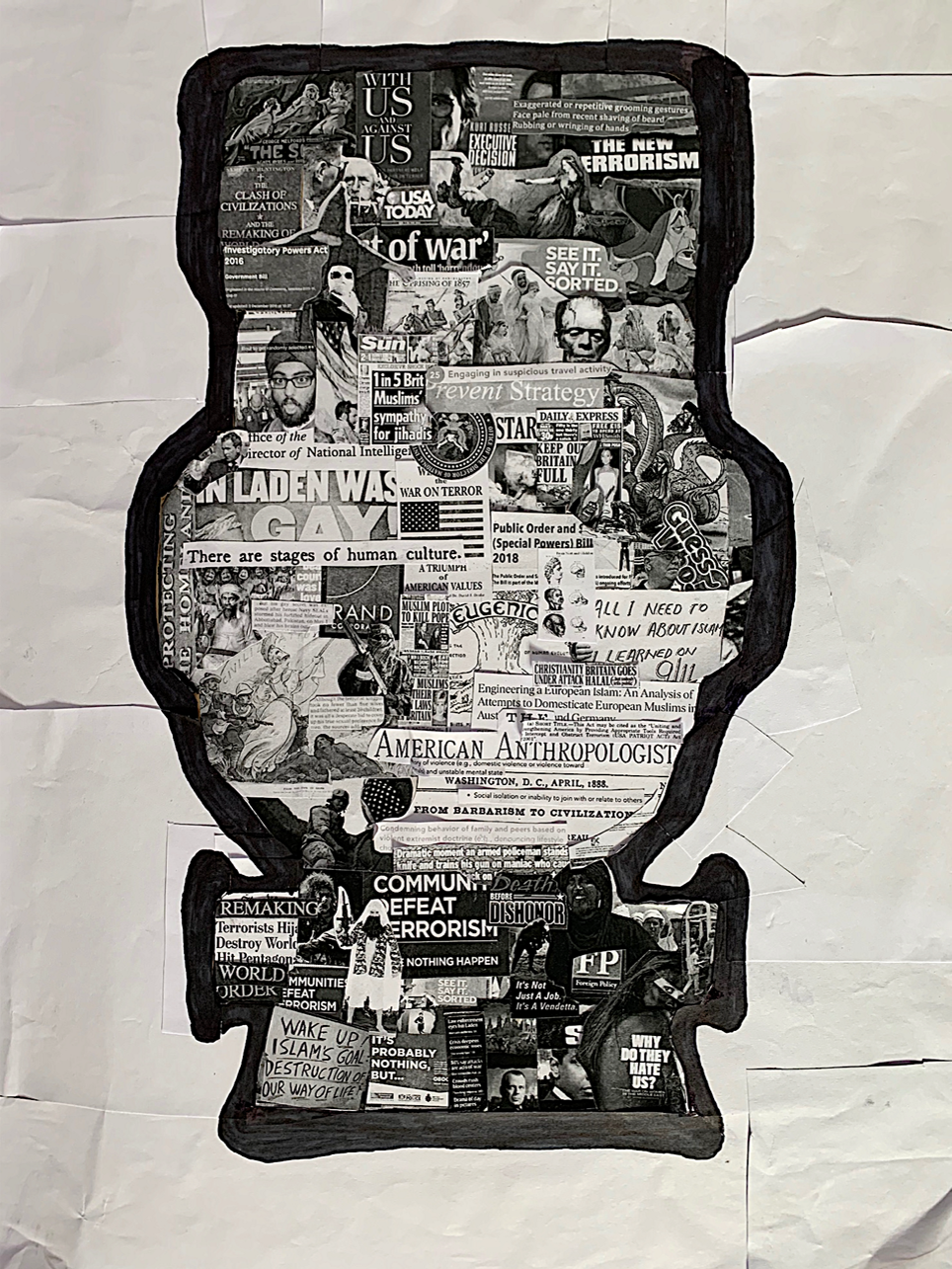
Using collage as a medium enables the exploration of the complex, often contradictory, negotiation of identities and the narratives which produce and sustain them, while also highlighting the exercise of power enacted through the mediation and framing of events and materials. I have compiled materials into the shape of Frankenstein’s monster, framing my presentation of the construction and securitisation of terrorism through Puar and Rai’s analysis of the ‘terrorist-monster’, exploring the continual reinvention of technologies of heteronormativity, white supremacy, and nationalism through which terrorism is understood and dealt with (2002). The materials, sourced online, include: excerpts from UK and US government counter-terrorism laws and infographics, paintings, movie posters, newspaper covers, articles and cartoons, protest signs, and International Relations literature. Encapsulating the complex mixture of materials in grey tones in a black outline against a contrasting white background, I aimed to draw attention to narratives of absolute morality surrounding terrorists and terrorism, framed in a Manichean duality of good and evil. Jackson suggests that rather than being an objective fact, terrorism is a social reality, which is constructed by the speech acts of authorised speakers (Jackson 2009, 75). The collage includes a wide range of speakers, ranging from political leaders to social media communications from individuals who find themselves securitised, emphasising the significance of the quotidian in defining subjects, legitimate knowledge and common sense of counter-terrorism. Drawing from Hansen’s poststructural approach to foreign policy as a discursive practice, I have included excerpts of government and security agency policy. Not only do these policies rely on a specific formulation of identity, the policies themselves also (re)produce these identities (Hansen 2013, 1). I have included academic literature and cultural output from the 18th century to present, visualising Said’s exploration the reproduction of ontological and epistemological division between ‘the Orient’ and ‘Occident’, while highlighting how its continuation acts as ‘Western style for dominating, restructuring, and having authority over the Orient’ (1978, 10). Alongside these materials are contemporary iterations of monstrosity, which continue to draw from hierarchical categories of race, gender and sexuality, forming the deviant terrorist-monster.
![]()
Hansen, Lene. 2013. Security as practice: discourse analysis and the Bosnian war Routledge, London
Jackson, Richard. 2009. ‘Knowledge, Power, and Politics in the Study of Political Terrorism,’ in Richard Jackson, Marie Breen Smyth, and Jeroen Gunning, eds. Critical Terrorism Studies. Abingdon: Routledge.
Puar, Jasbir. K. and Amit S. Rai. 2002. “Monster, Terrorist, Fag: The War on Terrorism and the Production of Docile Patriots 5” Social Text, 20(3), pp. 117-138.
Said, Edward W. 1978. Orientalism. New York: Pantheon Books.
Please click below for close-up images of the collage:
Click Below to Return to the Curation Front Page:
